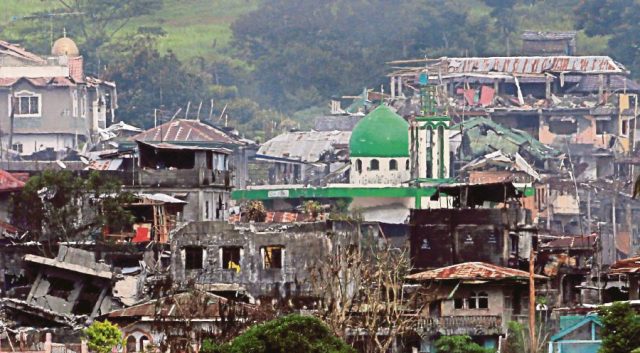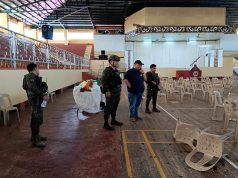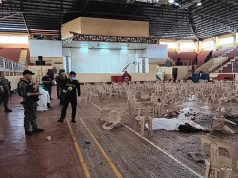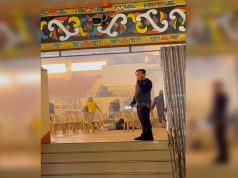
Preserve the ruins inside ground zero in Marawi City, renowned architect and urban planner Felino “Jun” Palafox Jr. proposed Tuesday as part of the government’s plans to restore the Islamic City to its former glory.
In an interview with radio dzRH, Palafox, who has worked in various rebuilding and rehabilitation programs in various countries, said the ruins could serve as a memorial for victims who perished or were affected by the battle between the government security forces and the terrorist Maute Group in Marawi City.
“These ruins, let them remain as remembrance for the victims. Let them remain as a museum of what terrorism can do to a business city,” he said.
Palafox further said the Philippines could take inspiration from the preservation memorials built by other countries that experienced disaster or conflict, such as Japan.
In Japan, the Hiroshima Prefectural Industrial Promotion Hall became a memorial for the thousands of victims from the atomic bombing that obliterated the city during World War 2 in 1945.
The Japanese government decided to preserve the building since it was the only structure left standing in the aftermath of the deadly bombing.
The linked tunnels found in Marawi could also be preserved just like network of tunnels in Vietnam that were used by Viet Cong soldiers during the Vietnam War.
Calling his suggestion “selective rehabilitation,” Palafox further suggested that the remaining slightly damaged structures, especially places of worship, would be the ones set to be rehabilitated.
A master plan for the rehabilitation and reconstruction of Marawi City is currently being prepared by the government with a budget of P20 billion.
Palafox said rebuilding Marawi City could be an opportunity to institute proper urban planning tenets so that best practices, as well as the lessons learned from mistakes in the rehabilitation of areas affected by super typhoon Yolanda and poor urban planning of Metro Manila, could be applied.
“In Marawi we can do a model city of peace that is environment-friendly, Islamic, interfaith, and international,” he said.
He also suggested bringing down the fortified walls, removing the overhead utility wires, and making Marawi City “walk-able” and “bike-able.”
He said he would present his blueprint later on, if he would be asked officially, to help in the Marawi rehabilitation.
Palafox said he has already floated his idea to Cabinet officials, such as Department of National Defense (DND) Secretary Delfin Lorenzana, Department of Finance (DOF) Secretary Carlos “Sonny” Dominguez, and Department of Budget and Management (DBM) Secretary Ben Diokno, who gave their positive feedback.
During the July 14 Mindanao Hour press briefing, Diokno mentioned Palafox’s suggestion as among the many proposals they received from the private and public sector for the restoration of the war-torn city.
“And let us then build better, plan, design, develop, build a new city, which is Islamic, interfaith, international, inclusive, safer, smarter, sustainable, resilient, walkable, bikable, livable modern city well into the 21st century,” Secretary Diokno added.








